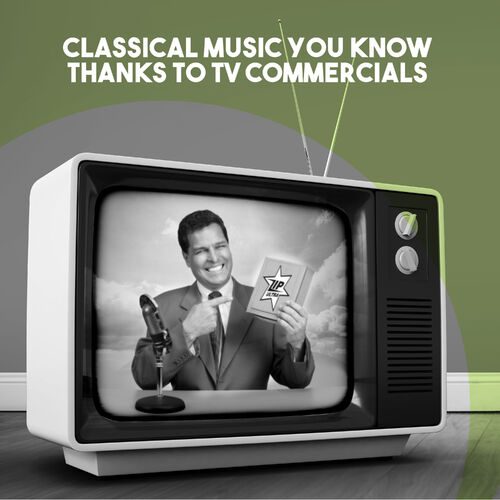Is Classical Music in Movies and Commercials really a Cliche?
Can you remember the first times you heard classical music? Was it when your parents were playing their cds, records or tapes, or maybe while staying in front of the TV and watching cartoons (like Looney Tunes and Tom and Jerry) and commercials?
Let’s just think a bit about it, usually it is thought that the “proper” (whatever that means) place of classical music is in opera houses, theaters, concert halls etc...so this makes it a non mainstream musical genre, which might be in danger of being fed to the masses. We, as regular listeners, feel emotion, joy and appreciation when listening to music of whichever type. What brands and the movie industry see, is the potential of music to recreate these emotions and to bring their audiences closer to them.
So let’s see why music is so valuable for commercial purposes. First of all, it constructs meaning and allows us to associate images with personal beliefs and maybe memories. In this way, we interact with the story of either commercials or movies through the pieces of music. Usually music has the power of being catchy and unforgettable and this is one of the things that make it seem familiar to us and reminds us of past experiences and memories. No wonder we are able to associate Tchaikovsky's Sleeping Beauty Waltzwith the ice skating scene from Tom and Jerry. Can you see how it works for this example? From a young age, before we develop our tastes and preferences, we have this visual memory which has a classical piece on the background and whenever we hear it we recreate a memory and put a smile on our faces.
There have been many scientific studies that have been carried out on this topic. The results are really interesting and people experience different emotions when exposed to music in commercials or movies. Take for example an experiment carried out at the University of the Basque Country. The participants were exposed to different commercial sets which had the same text, speaker, images, but different music on the background. The different music pieces made the difference in the participants’ perception of the speaker and of the brand:
“The study participants who listened to the version of the advert with music that was faster and had a greater musical range thought the speaker seemed happier, more restless, sporty, enthusiastic and daring” and the brand was “more energetic, sporty, exciting, refreshing, young and fun.”
“The people who were played the musical version with less tonality and a slower tempo found the person speaking to be calmer, more relaxed, patient, delicate, understanding, disciplined, mature and trustworthy” and the brand was “more delicate, soft, relaxing, mature, natural and healthy”
Some argue that the commercialization of classical music turns it into a cliché. This doesn’t necessarily mean that it loses its value. It’s just a different way of using and experiencing it. It can actually be fun when you hear, for example, Orpheus In The Underworld: Infernal Galop to remember that cancan dance scene you saw on TV a while ago. Even if you don’t know the exact name of the music piece, it brings back pleasant (or not) memories. Of course you want to listen to it again right away if possible, so you go and type on Youtube or Google something like “cancan scene Bugs Bunny”, and there you go. Now you have the exact name and probably some of the suggested videos will catch your attention. Maybe, just maybe, the commercialization of classical music is not such an outrageous thing. Maybe it just brings classical music closer to people who don’t usually listen to it on a daily basis.
